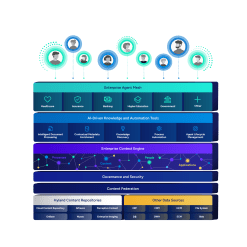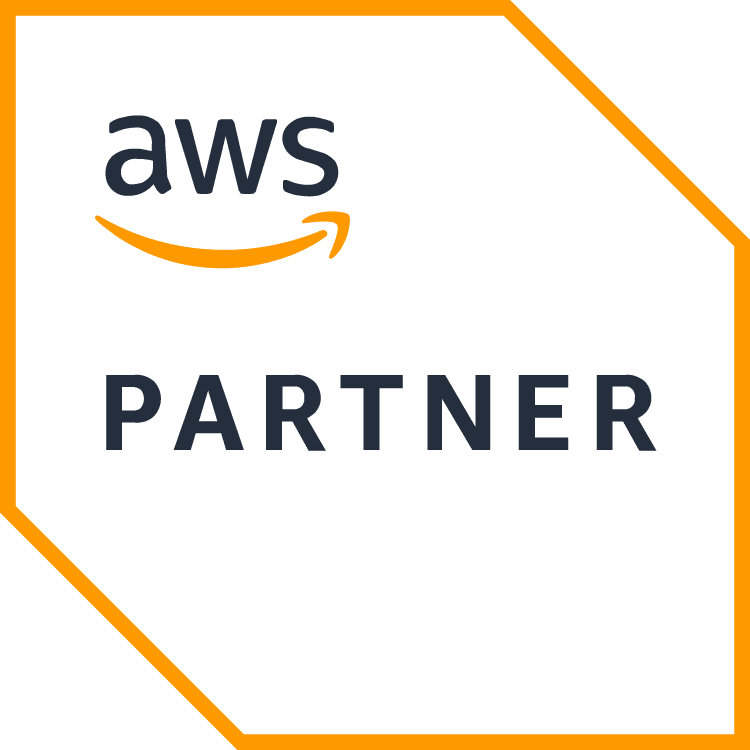Benefits of DAM in the cloud
Speed and cost of implementation
A cloud solution is less costly than the traditional on-premises solution of installing copies of software on multiple platforms.
As well as eliminating the costs associated with installation and ongoing maintenance, the move to a subscription-based operating cost is often more appealing from a budget management perspective.
Speed of implementation is quicker than traditional methods, meaning faster ROI from the solution. Customers of Hyland’s Nuxeo Platform have found that the time to implement a cloud-native DAM environment is as much as six times quicker than with a traditional DAM solution.
Collaboration
Because a cloud solution is accessible from anywhere with an internet connection and a browser, they inherently have an infrastructure that promotes collaboration more easily than the traditional solutions.
Cloud access means that multi-step VPN logins are no longer required.
A cloud DAM and user-based permissions mean you can make sure that the right people, both internal and external, have access to the assets they need at the time they need it.
For instance, with Hyland’s Nuxeo Platform, it is possible to give access rights to one asset to a named individual, for a set period of time — say if you wanted to have someone in an external agency fix an issue on a given photo touch-up within a 48-hour window.
Location is no longer an issue with a cloud DAM solution.
As long as someone has an internet connection and has been given the right permissions, they and others on their team can upload, search, retrieve, work on or publish assets from wherever they are located, across both functional and geographical boundaries.
Scalability
One of the hardest parts of implementing a traditional DAM system is trying to estimate what storage you need. Do you size for what you need now or for future growth and how do you estimate that?
With cloud-based DAM, you don’t have to try and estimate for future growth. The solution will grow or scale with you. You can start off at the size you need for today, plus a little bit of a growth buffer and then scale as the number and type of assets increase.
Hyland’s Nuxeo Platform customers have grown to manage millions of assets in their cloud environment. The system has been stress-tested to handle billions of objects, allowing customers to scale at an unprecedented rate.
Continuous development
With a cloud DAM solution, there’s no longer the risk of falling several versions behind or needing to interrupt regular production cycles to install upgrades.
Because the DAM environment is managed as a service common to all subscribers, any updates are pushed out automatically to all users during scheduled maintenance windows.
The same is true of any bug fixes or functionality improvements. These no longer have to wait for a scheduled software release to be packaged and shipped. The platform developers can incorporate and push out a new or upgraded feature as soon as it is ready.
Moving away from a periodic repetitive update schedule to one of continuous development means that the users of the cloud DAM will always have the same capability, with the latest available — and it’s all done automatically.
Analytics
As a cloud services provider is managing the overall service, they are collecting analytics on various aspects of the system. This is often extended into collecting analytics about the usage of the assets stored within the system and the various user interactions.
From a digital asset management perspective, this means that it’s possible to track not only image use and metadata but also how often it is being searched for, accessed and worked on — by who and from where. Relationships between assets, such as derivatives, usage in translations and more can also be tracked.
Managed services
Moving to a cloud environment for DAM is a key strategic decision that not only provides implementation cost savings and increased efficiencies, but also has a side benefit in terms of operational costs. Opting for cloud-based DAM relieves organizations of the burden of managing and maintaining the system themselves.
By outsourcing the management and maintenance to a third-party service provider, organizations can redirect their budget from routine upkeep tasks towards more strategic initiatives. This shift allows for greater flexibility and scalability in technology adoption, enabling businesses to concentrate on their core activities without the distraction of managing their DAM platform.
Strategic platform for digital supply chain
By centralizing digital assets in the cloud, organizations gain a comprehensive view of their content inventory, spanning from creation to distribution. This centralized repository facilitates seamless collaboration among internal teams, external partners and stakeholders at every stage of the supply chain.
A cloud-based DAM solution also integrates seamlessly with other key components of the digital supply chain, such as content creation tools, marketing automation platforms and e-commerce systems. This enables automated workflows, reducing manual intervention and accelerating the pace of content delivery.
Moreover, the ability of a cloud-based DAM solution to scale and adapt to evolving business needs allows organizations to meet peak demand during promotional campaigns. Organizations can efficiently manage their digital assets without the constraints of traditional on-premises infrastructure.
Global infrastructure for cross-border collaboration
Geographic barriers become obsolete as users adopting a cloud-based DAM can access the platform from anywhere with an internet connection. This accessibility fosters real-time collaboration and eliminates the delays and inefficiencies associated with traditional file sharing methods.
Besides that, robust security measures are in place to protect sensitive digital assets, ensuring compliance with data privacy regulations across different jurisdictions. Advanced user permissions and encryption protocols safeguard against unauthorized access and data breaches, instilling belief in cross-border collaboration.
With the support multilingual capabilities, teams from different regions are empowered to collaborate effectively without language barriers. Whether it's coordinating marketing campaigns in multiple countries or managing global product launches, organizations can leverage the cloud to streamline collaboration and ensure consistency across diverse markets.
If there was a worry of being confused with disparate files repositories and outdated content, those doubts can be erased. The centralized management and version control capabilities of a cloud-based DAM solution enhances visibility and accountability, enabling stakeholders from different regions to collaborate seamlessly on shared projects.

















